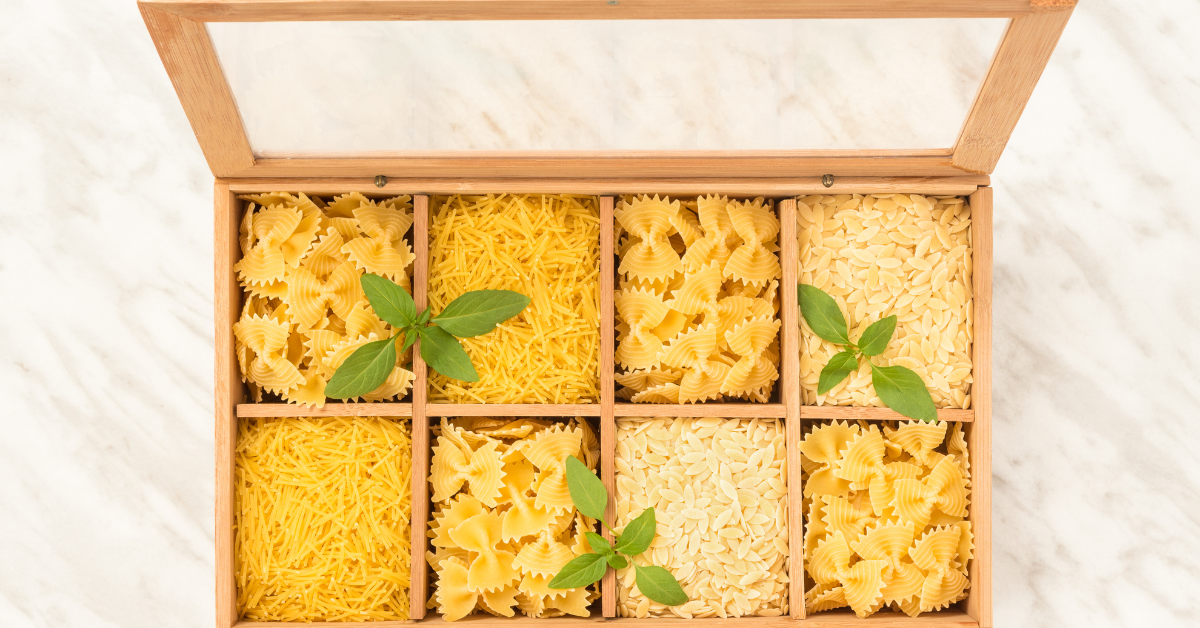In a survival situation, you have to assess your surroundings and deal with the most immediate problem first. For example, if the weather is worsening, it’s time to construct a shelter or build a fire. On the other hand, if the weather is agreeable, but you are low on potable water, then it’s time to collect more water.
The rule of 3 survival principle helps guide us in these scenarios.
Understanding the survival rules, especially the survival rule of 3, equips us with knowledge that could be lifesaving in emergency situations. An essential survival rule is "the rule of threes." The survival rule of three as it pertains to survival contains the following guidelines:
- You can survive for three minutes without adequate oxygen
- You can survive three hours without shelter (when you’re in extreme hot or cold weather)
- You can survive three days without water (if you have proper shelter)
- You can survive three weeks without food (if you have proper shelter and water)
If you are interested in how to make the best decisions possible during an intense survival scenario, keep reading to learn more about the rule of three, as well as other survival rules and priorities.
The Rule of Three Survival Strategy

The rule of three for survival helps highlight what priorities we should worry about first in the case of SHTF. Obviously, clean air is first on the list. For example, in a house fire, your priority is to evacuate and get to a place with clean, breathable air. You won’t be trying to collect emergency food buckets if you asphyxiate from the smoke in three minutes.
[product_render product-handle="72-hour-emergency-food-kit"]
Next is a safe shelter. Proper shelters insulate us from insects, wild animals, and, most importantly, harsh weather. In survival scenarios, exposure to extreme weather can cause injury or, worse, death. Falling ill from too much sun exposure during a heat wave or going hypothermic in the winter can knock us out quicker than going days without water.
Understanding the rule of threes survival strategy can be a lifesaver. If you have clean air and a safe shelter, the next thing you should worry about is water. Prepping water for survival scenarios is extremely important. On the other hand, if you are on the go, you will have to find new water sources. In this case, we always recommend having at least two water treatment strategies, depending on the scenario. There are a number ofways to purify water in the wild that you can use in a survival situation, includingways to desalinate water if you're by an ocean.
Survival is all about being prepared. And the best way to be prepared is to know what to do. That's where our free guide comes in.Click to download our free survival guide, which outlines the most important rules for survival in any situation.
Out of all the survival priorities, following the rule of threes survival principle, you can survive the longest without food. Therefore, you can worry about food once you construct or secure a shelter and a good water source. If you are bugging out and living out of your bug-out bag, bringing food with you will be critical to at least meet yourminimum calories per day to survive.
|
You Can Survive… |
|
|
For Minutes |
● With severe bleeding ● In icy water ● Without breathing ● With cardiac arrest |
|
For Hours |
● Exposed to extreme heat ● Exposed to extreme cold |
|
For Days |
● Without adequate drinking water |
|
For weeks |
● Without an adequate food source |
Applying the Survival Rule of Three
Clean air, shelter, water, and food take top priority during survival situations. However, once you have a handle on those, it’s crucial to consider other important survival priorities.
Warmth

Building a bushcraft shelter is an effective strategy for providing warmth and maintaining a safe body temperature. Having proper clothing for the local climate is another critical survival rule. But the most important is fire.
Knowing how to make fire is one of the essential survival skills. For example, fire can help keep you warm, dry wet clothes, treat water, melt snow for drinking water, signal rescuers, produce light, heat food and drink, and boost morale.
In an ideal world, your survival kit will have multiple tools for making a fire—for example, flint and a box of matches. But you can also start a fire without matches and can find alternate heat sources.
First Aid

Administering first aid to yourself or to another person in your survival group is inevitable. Being prepared with a fully stocked first aid kit and adequate first aid training and knowledge will take you far in a survival scenario.
When caring for an injured person, it’s important to remember the ABCDs of survival.
- Airway – check for and clear an obstructed airway
- Breathing – check for breathing by feeling for an exhale with your hand or monitoring the rise and fall of the chest
- Circulation – feel for a pulse and stop any life-threatening bleeding
- Disability – assess the level of responsiveness of the person and if they are able to move
Positive Attitude
Some survival experts argue that it only takes three seconds to make a poor decision. That is why staying calm and assessing your situation is critical. Maintaining a positive attitude is part of making smart decisions in a survival scenario.
Assessing and fixing problems with an optimistic mindset focused on finding a solution instead of dwelling on the problem can be hard to accomplish in a stressful survival situation. The acronym S.T.O.P. helps teach this concept.
- Stop – stay in one place if you are lost, and don’t backtrack.
- Think – focus on the solution and not the problem
- Observe – take in your surroundings
- Plan – create a plan to prioritize your survival needs
But remember, survival is a state of mind. And part of that mindset is staying focused on the light at the end of the tunnel, not the darkness surrounding you.
A commitment to live, refusal to give up, and positive mindset significantly increase the chances of survival.
- Do your best to control your (irrational) fears.
- Panic is a more dangerous enemy than fear.
- Poor nutrition and dehydration can depress your mental fortitude.
- Fatigue clouds your judgment and slows down your thinking.
- Keep busy to keep your mind occupied and refrain from feeling lonely.
Signals

Signaling is not as essential as clean air, shelter, water, or food. With that being said, you never know when the next time to signal for help will come. That is why you should be ready to signal for help at any given moment.
Having multiple ways to signal for help while you are survival camping should be one of your priorities.
- Signal mirrors
- Signal fires
- Whistles
- Personal locator beacons
- Finding service for your cell phone
- Ground-to-air signals
In any survival situation, it is important to keep the rule of three survival principles in mind at all times. This will not only help in making critical decisions, but will also ensure your survival in the most dire circumstances.
Are you prepared for any disaster? Download our free survival guide now and be ready for whatever comes your way.

Staying Motivated While Applying the Survival Rule of Threes
If SHTF and you are thrown into a survival situation, you can guarantee that life will transform into a much more complex scenario than you’re probably accustomed to. Injuries may worsen, and you might be in pain. And even if you haven’t been injured, your worries and anxieties about survival may increase.

Most survivors of dire situations report that nighttime was when they felt the saddest and most unmotivated. When you find yourself at a low point, you have to find a way to boost your morale and stay motivated.
One of the best ways to stay motivated is to set goals and accomplish survival tasks. When defining goals you want to accomplish, we recommend you use the S.M.A.R.T. acronym.
- Specific – the goal you want to accomplish is well-defined
- Measurable – success from accomplishing your goal is quantifiable
- Attainable – you can realistically accomplish the goal
- Relevant – the goal is vital to your survival
- Time-bound – the goal has a start, and end time
For example, an ill-defined goal could be, “I want to collect and treat water today.” On the other hand, a S.M.A.R.T. goal during a survival scenario could be, “I want to collect and treat one gallon of water before the sun goes down.”
Visualization, Mindfulness, and Mantra Are an Add On Survival Rule
Visualize accomplishing tasks and fulfilling your basic survival necessities. You can enrich your visualizations by focusing on your five senses. Proper visualization will help you strengthen your motivations for accomplishing your goals.
Mindfulness is an excellent coping strategy. Focusing on the moment and purposely paying attention to the details of your situation will help you survive.
Inspiring mantras or mottos can be an essential source of strength in dire situations. Short and personal mantras will help empower you and keep your mind occupied positively. Some mantras we've employed in the past include:
- “This too shall pass”
- “One day at a time”
- “Yes, I can”
- “I am stronger than I think”
Survival Rules are Guidelines

Every survival situation is different. That is why the survival rules and priorities we presented should be used as guidelines. It will be up to you to assess the situation and use common sense to determine what you or your survival group should prioritize to survive.
However, as a general rule of thumb, we recommend prioritizing based on what’s most important:
- Air – evacuating from a burning building or using a gas mask
- Shelter – building a shelter or pitching a tent to get out of the rain, snow, sleet, or wind
- Water – stashing water, collecting water, and treating water
- Food – preparing rations for everyone and even a vegetarian emergency food supply
- Other important priorities – such as warmth, a positive mental attitude, and signaling
Let's not forget that practice makes perfect. Prior to finding yourself in a survival situation, you should practice the rule of three survival principle. Simulating situations where you might need to implement these rules can help prepare you for the real thing. This will also give you the confidence needed to face any emergency.
Survival rules, specifically the survival rule of 3, are vital. It is therefore important to learn, understand, and apply them. They could very well save your life one day.
For more helpful survival articles, please visit our Practical Prepper blog. Or, to speak with an expert about emergency food storage, you can schedule a meeting. We look forward to helping you!



